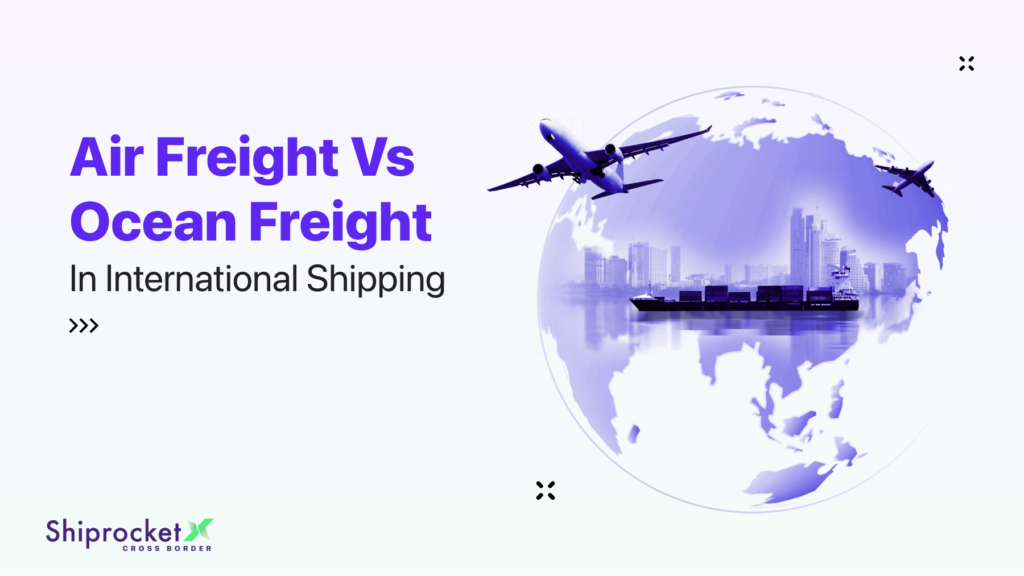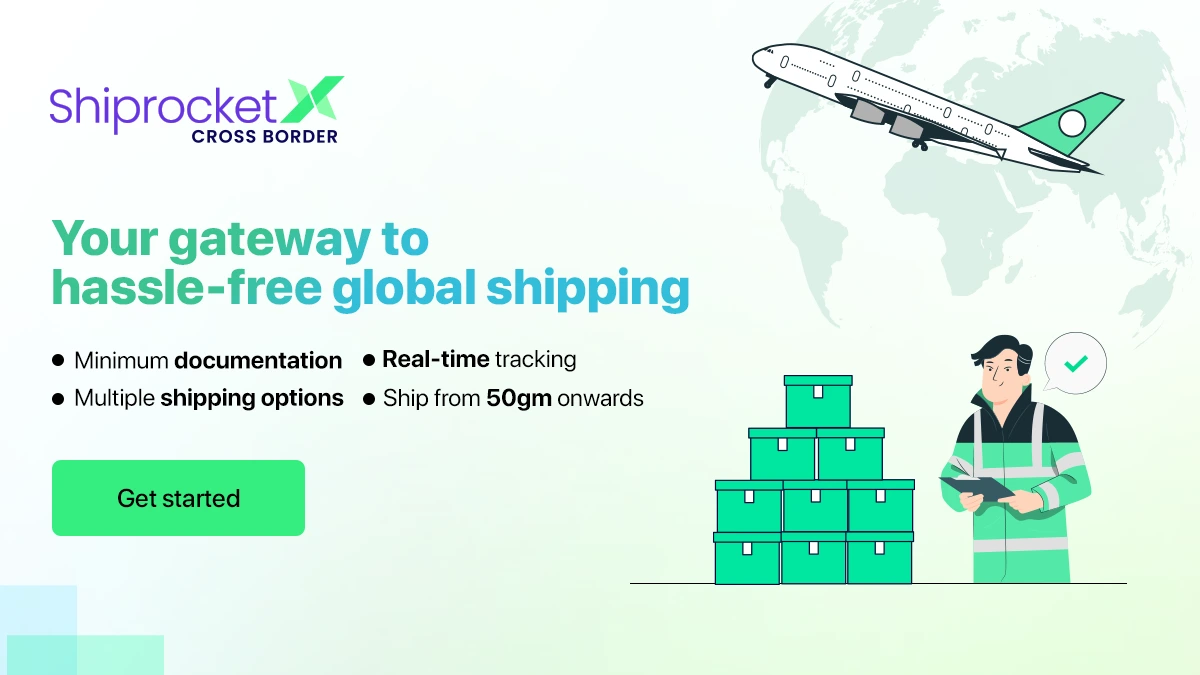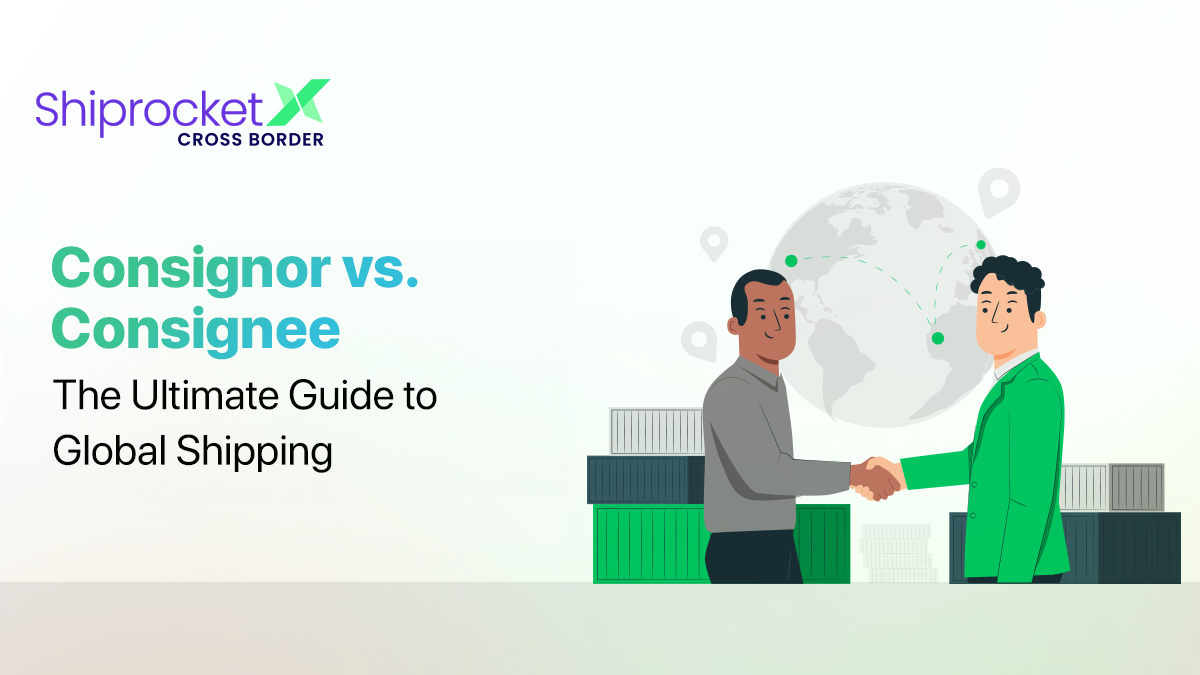Air Vs Ocean Freight In International Shipping: Which Is Better
If you’re an eCommerce business into global trade, choosing the right mode of shipping can be challenging. Selecting an ideal logistics mode for your line of products requires in-depth analysis and knowledge of the logistics industry, and should help your business stay efficient and cost effective.
Before we look into the advantages and disadvantages of air and ocean freight in international shipping, here are a few challenges these shipment transport modes face while shipping globally.
Fast Fact: More than 80% of global trade is carried out via ocean freight.

What is Air Freight?
Air freight is a faster method of transporting goods from one country to another. However, the quick delivery speed and short transit times make air freight comparatively expensive compared to sea freight. Normal passenger planes or cargo aircraft dedicated to moving air cargo are used to ship air cargo. The goods are placed into boxes, crates, or pallets and loaded onto a plane. Air freight is ideal for sending goods with a limited shelf life, including pharmaceutical products, food items, etc. since the air cargo will reach its destination either on the same or the next day.
Air freight is usually used to send fragile, high-value, and small-volume goods. It saves you time and is a more secure transport method compared to sea freight. This security against the risk of pilferage and theft can be attributed to high airport security.
Moreover, the time required to clear air cargo for imports and exports is much less as compared to sending and receiving goods by sea. That’s why the need to warehouse air cargo is often much less.
Air cargo is often classified as general cargo and special cargo.
Pros and Cons of Air Freight
Here are the major benefits of air freight:
- Shorter delivery times
- Perfect for time-sensitive goods
- Air freight is one of the most reliable courier services
- It often comes with shipping insurance at lower premiums
- Convenient to transport cargo, especially smaller shipments
- With quick customs clearance, the need for warehousing is minimised
Let’s take a look at the drawbacks of air freight:
- It’s more expensive compared to sea freight and other methods of transportation.
- Since it’s more expensive, it’s not suitable for transporting bulk and heavy shipments.
- Due to the limited availability of space, air freight comes with several restrictions on the shape and size of cargo that can be transported.
- This mode of transportation is heavily influenced by weather conditions.
- Duty and VAT are higher for air freight.
- It significantly contributes to air pollution.
Challenges of Shipping Via Air
Firstly, air shipping was one of the most negatively affected modes of transportation during the COVID-19 pandemic. While there were newly set restrictions on this mode of operation, the demand equally peaked post pandemic. As a result, freight capacity has taken a hit, with severe congestion reported, especially during peak festive periods.
Furthermore, due to the imbalance in the demand, the prices for air cargo transport have risen abnormally.
What is Ocean Freight?
Sea or ocean freight is one of the most common methods of transporting goods between different locations, especially during international trade. As the name suggests, it involves the shipping of goods by sea. The goods are loaded onto a container ship and transported by sea. Cargo carriers are used to transport goods packed in intermodal containers. As compared to air freight, it’s a less expensive option for transporting goods from one country to another.
Mostly, commercial ships are used to move large amounts of cargo from one port to another in ocean freight.
If you’re transporting cargo in bulk, sea freight is the most suitable option because it’s easier to handle large-sized and differently-shaped cargo when there is a huge amount of space available on ship decks, in container yards, and in cargo holds.
There are different types of ocean freight, including the following:
- Full Container Load (FCL)
- Less Than Container Load (LCL)
- Roll-on/Roll-off (RoRo)
- Break Bulk
- Refrigerated Shipping (Reefer)
- Open Top and Flat Rack
- Tank Containers
- Container Vessels with Reefer Plugs
- Barge Carriers, etc.
Pros and Cons of Ocean Freight
Let’s explore the key benefits of ocean freight:
- It’s a cost-effective shipping solution to deliver goods from one country to another.
- Duty and VAT charges are comparatively lower for ocean freight as compared to air freight.
- Sea freight containers can hold more weight than aircraft, ensuring the transportation of huge shipments easily.
- It’s a more environmentally friendly option with a lower carbon footprint compared to air freight.
Here are the drawbacks of ocean freight:
- The delivery times are longer compared to air freight.
- It’s not an ideal shipping solution for time-sensitive shipments.
- It’s also not suitable for shipping smaller shipments.
- It’s less reliable compared to express shipping.
- Weather conditions and port congestion can cause significant disruptions in shipment schedules.
- The risk for damage increases since goods shipped via sea are handled several times before they reach the final destination.
- Generally, the shipments are more prone to theft as containers are left unprotected for extended periods during transit .
Challenges of Shipping Via Ocean
This mode of shipment transportation has faced too many issues in the global export sector. For instance, there have been multiple times when container shortage has been a problem for international business, leading to further delays in product delivery across borders. India faced 22.4% container shortage during the month of September 2022, which lasted till almost the end of 2022. Due to the recurrence of container shortages each month, the prices for ocean cargo transport increased drastically, since most businesses were willing to pay premium rates to acquire containers.
Did you know? The price for shipping containers has increased 4X due to an increase in demand and a shortage of supply!
Moreover, it was also observed that logistics ships lost track of schedule due to limited capacity and oversurge in shipments. This led brands to lose out on businesses due to loss of parcels, damage of shipments, and shipments being delivered to the wrong export destinations.
Air Freight vs Ocean Freight: Which Best Suits Global Businesses
Let’s look at some of the major factors you should consider when deciding between air and ocean freight.
Chargeable Weight
Air freight calculates shipping costs based on chargeable weight, which can either be the actual weight of the goods or their dimensional (volumetric) weight—whichever is higher. Dimensional weight considers the cargo’s volume, which is critical for lightweight but bulky items. This method ensures that carriers are compensated fairly for the space used and not just the weight of the shipment. For air freight, this often means higher costs, especially when the dimensional weight exceeds the actual weight. This mode is ideal for shipping smaller, high-value, or time-sensitive goods, where speed outweighs the cost considerations.
Ocean freight, on the other hand, primarily charges based on the volume of the cargo rather than its weight. Since ships can carry significantly more weight than planes, the cost is generally lower, especially for bulky or heavy items. Ocean freight is more economical for large volumes or heavy shipments that are less time-sensitive. This mode is preferred for transporting bulk goods, large machinery, or materials that do not require expedited delivery.
Type of Cargo
Before you pick a transportation method, consider the type of goods you’re shipping. If you’re shipping time-sensitive goods with a limited shelf life, air freight is a better option. You can ship food products, perishable items, pharmaceutical products, etc., via air freight. Considering the size of the cargo, air freight is more suitable for smaller shipments than bulkier and heavier shipments.
However, ocean freight is better suited for large, bulky, and heavier shipments. It’s also more suitable for goods that can withstand the harsh transportation conditions at sea.
Safety of Goods Transported
Ocean freight has a much higher probability of shipments getting damaged due to unforeseen weather conditions and increased chances of shock during container fall-offs. Numerous packaging processes for ocean freight help secure your parcels even during such scenarios.
While in air freight, your shipments are stable and damage-free, and on schedule, barring rare occurrences of strong rains or storms. This means your orders are guaranteed timely delivery to your customer’s doorstep.
Logistics Affordability
When it comes to the cost factor in international shipping, air freight costs less than ocean freight. This is because the shipping prices are almost always 15-20% less than the costs of the shipments. Most logistics companies recommend light shipments to be transported via air shipping rather than seaway due to affordability.
Additionally, air freight is faster and safer as outlined above. But ocean freight is considered to provide higher parcel capacity than air freight and thus ideal for bulk shipments.
Transit Speed and Time
The speed of shipment transit differs from time to time between air and ocean freight. While international businesses are recommended to prepare and ship their products early on, which buyer doesn’t love speedy delivery? Especially for products that have a short shelf life such as drugs and perishable goods, faster deliveries are necessary. Air freight is more suitable for such quick deliverable goods, although sometimes the costs for priority shipping are on the premium side of rates.
Sustainability
In terms of sustainability, ocean freight stands taller than air freight due to the fact that it generates less carbon footprint. CO2 emissions for ocean freight are less than those in air shipping mode and it has been estimated that all ocean carriers will become carbon neutral by the year 2030.
Air freight still lags behind when it comes to ensuring low carbon emissions.
Air Freight Restrictions for Hazardous Goods
Restrictions for hazardous goods are one of the most important factors you should consider when deciding between air and ocean freight. These factors include the type of cargo you’re shipping and where you’re shipping to.
Air freight comes with a long list of prohibited items as compared to sea freight. This list can vary based on the country you’re shipping to and airline regulations. Some of the most common prohibited items include:
- Explosives
- Gases
- Flammable liquids
- Corrosives
- Radioactive Material
- Oxidising substances and organic peroxides
- Toxic and infectious substances
- Flammable solids, including substances prone to spontaneous combustion
- Substances which can emit flammable gases when they come in contact with water
- Miscellaneous dangerous substances and articles, including environmentally hazardous substances
- Biochemical products
If you’re considering air freight to transport goods, you should discuss the nature of the cargo with your freight forwarder. You should inquire about any restrictions on packaging. For example, there is often a maximum weight restriction for corrugated fibreboard boxes.
If you’re considering flexibility in terms of restrictions on goods, sea freight is the clear winner here. Sea freight is more accommodating in terms of the type of goods you can ship via sea.
Conclusion: Why Air Shipping Comes Off as The Better Option
Although both these global shipping modes have their own sets of pros and cons, it is safe to say air freight emerges as the better shipping option for eCommerce exports, depending on the transit time, prices, and load capacity. Most cross-border logistics solutions nowadays offer air shipping at reasonable prices, accompanied by assured shipment protection and guaranteed faster deliveries. For example, India’s leading global shipping solution, ShiprocketX, provides air shipping services across the globe at one of the best industry prices, along with security cover for shipments lost or damaged. Such shipping partners are highly reliable in delivering your products via your preferred mode.







